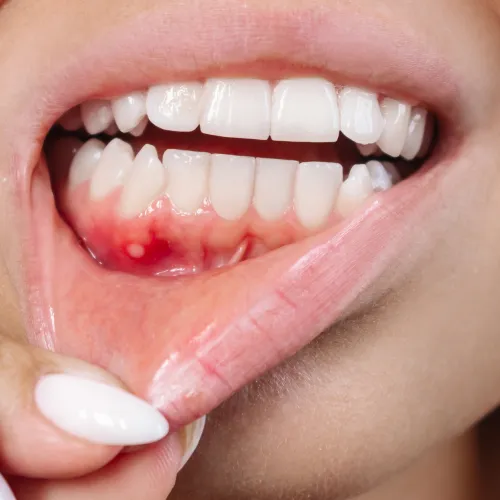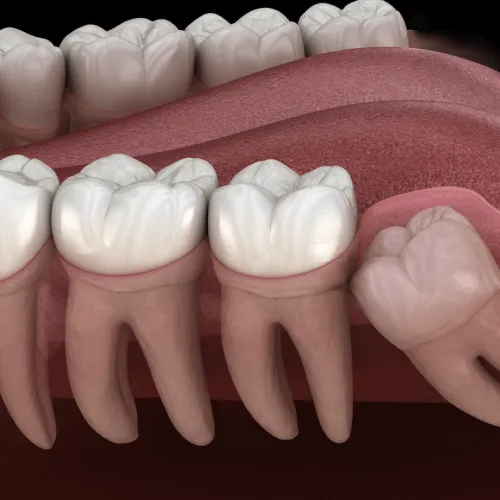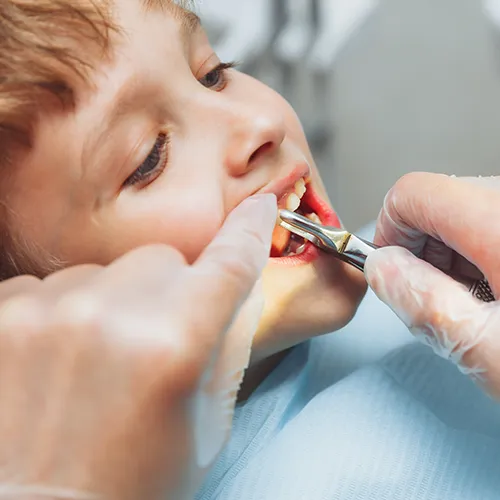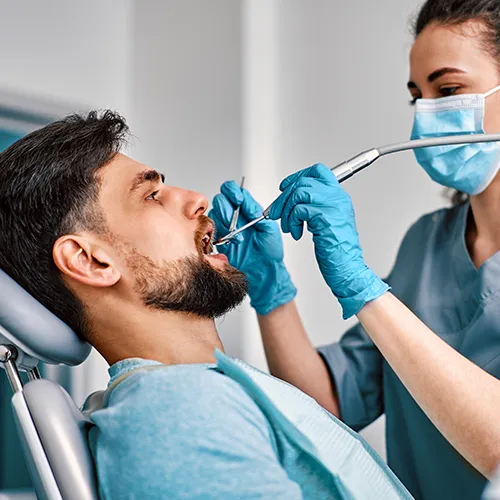Restorative Dentistry, Cosmetic Dentistry
Everything You’ve Ever Wondered About Dental Crowns (But Didn’t Ask)
Dental crowns don’t usually come up in casual conversation, but when your dentist says you need one, suddenly you have a hundred questions. What even is a crown? Why do I need one? How long will it last? Is it going to cost a fortune?
You’re not alone. At Prestige Dental, we hear these questions every day. So we’re breaking it down here—not with boring technical jargon, but with real answers that help you feel confident about your next step.
Let’s get into it.
How long do dental crowns last?
This is one of the first things people ask, and rightfully so. You want to know whether you’re making a long-term investment or signing up for something that’ll need constant repairs. Here’s the truth: Most dental crowns last between 10 to 15 years.
With excellent care, some even last up to 25 years or more. The material matters—porcelain crowns look great and hold up well, but zirconia or gold crowns can last even longer. Your habits matter too. If you grind your teeth or chew ice, that lifespan can shorten. But with proper brushing, flossing, and regular checkups, a crown can go the distance.
Here’s what influences crown longevity:
- Material: Porcelain-fused-to-metal, ceramic, resin, and gold all have different wear levels.
- Placement: Molars, which handle more chewing force, may wear out faster than front teeth.
- Care: Good oral hygiene is key. So is avoiding bad habits like nail-biting or using your teeth to open things.
Think of a crown like a high-quality roof for your tooth. You want something that looks good, functions well, and stands up to daily use. And just like a roof, a little maintenance goes a long way.
How much is a dental crown?
Let’s talk numbers—because crowns aren’t one-size-fits-all, and neither are their prices.
In the U.S., the cost of a dental crown typically ranges from $800 to $2,500 per tooth.
Why the range? It depends on:
- Material: Porcelain and ceramic usually cost more than metal.
- Lab vs. Same-Day: Traditional lab-made crowns take longer but may be more customized. CEREC same-day crowns are convenient but can carry a premium.
- Location: Prices vary by region and practice.
- Insurance: If your crown is medically necessary (like for a cracked or decayed tooth), insurance might cover part of it.
At Prestige Dental, we’re always upfront about costs before any work begins. We’ll walk you through your options, explain what your insurance covers, and help you find a payment plan if needed. No surprises—just a healthier smile.
What happens when you get a crown?
If you're imagining medieval dentistry or an all-day ordeal, take a breath. Getting a crown isn’t as dramatic as it sounds. In fact, it’s a pretty routine procedure—and it might even be quicker than you think.
Here’s what typically happens:
1. The Consultation:
We start by examining the tooth and taking X-rays. If a crown is the right call, we’ll talk through the types available and get started.
2. The Prep Appointment:
Your dentist will numb the area, then shape the tooth to make room for the crown. We take a mold (or digital scan), then fit a temporary crown to protect the tooth while your custom one is made.
3. The Final Fit:
Once your permanent crown is ready—usually in about 2 weeks—we remove the temporary and cement the final crown in place. We check your bite, polish things up, and make sure it feels completely natural.
For same-day crowns (if available), the entire process can be done in one visit using digital technology.
Does it hurt?
Not really. You’ll be numbed during prep, and most patients report only mild soreness afterward, if any. It’s way easier than people expect—and the relief of having a protected, functional tooth again is worth it.
So, do you actually need a crown?
Crowns are used when a tooth is too damaged for a filling but not so far gone that it needs to be removed. If you’ve had:
- A cracked or broken tooth
- A large cavity
- A root canal
- A worn-down or misshapen tooth
- A cosmetic concern with a visible tooth
…then a crown is likely the best way to protect your tooth and restore your smile.
Some people try to delay it, hoping a filling will do the trick. But if your dentist recommends a crown, it’s usually because the tooth won’t stay healthy with a less involved fix. Postponing treatment can lead to bigger problems (and costs) down the line—like infections, tooth loss, or more extensive dental work.
What should I expect after getting a crown?
The first day or two, your bite might feel slightly “off” as you get used to the crown. That’s normal—and if anything still feels strange after a couple of days, we can adjust it easily.
You can eat normally (once the numbness wears off), brush and floss like usual, and treat it just like your other teeth. The goal is for you to forget it’s even there.
Still, it’s good to avoid sticky foods and chewing hard objects directly on that tooth, especially in the first few days. Give it a bit of grace while it settles in.
Can a crown fall off?
It’s rare—but yes, it can happen if:
- The cement weakens over time
- You’re grinding your teeth excessively
- There’s decay under the crown
- The crown wasn’t properly fitted or sealed
If yours ever comes loose or falls off, don’t panic. Hold onto it and call us. In many cases, we can re-cement it if the tooth is still healthy. If not, we’ll talk through your options and get you back on track fast.
Final thoughts: Crowns aren’t as intimidating as they sound
They’re one of the most common (and successful) dental restorations—and for good reason. A crown protects your tooth, restores your bite, and brings back your smile. And at Prestige Dental, we make sure the process is smooth, the results are natural, and your comfort is a priority from start to finish.
If you’ve been told you need a crown, or if you’ve been living with a damaged tooth and wondering what your options are, we’re here to help.
Schedule your appointment today and let’s talk about what’s best for your smile.
















